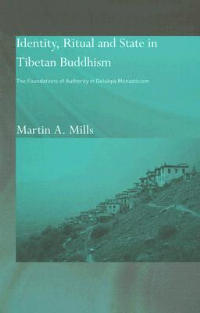 Identity, Ritual and State in Tibetan Buddhism
Identity, Ritual and State in Tibetan Buddhism

This is a major anthropological study of contemporary Tibetan Buddhist monasticism and tantric ritual in the Ladakh region of North-West India and of the role of tantric ritual in the formation and maintenance of traditional forms of state structure and political consciousness in Tibet. Containing detailed descriptions and analyses of monastic ritual, the work builds up a picture of Tibetan tantric traditions as they interact with more localized understandings of bodily identity and territorial cosmology, to produce a substantial re-interpretation of the place of monks as ritual performers and peripheral householders in Ladakh. The work also examines the central and indispensable role of incarnate lamas, such as the Dalai Lama, in the religious life of Tibetan Buddhists.
|
|
Contents:
Part I: The Face of Monasticism
1. History and Authority
2. The Face of Monaticism
3. Reassessing Monasticism
Part II: Truth and Hierarchy in Tantric Ritual
4. Iconography, Authority and Truth in Buddhist Tantra
5. Tantric Practice and Kumbum
Part III: Local Rites
6. Care and Cosmology in Lingshed
7. Relations with the Dharma
8. Pollution Concerns in Lingshed
Part IV: Authority and the Personin Gelukpa Monasticism
9. The Incarnate, the Scholar and the Oracle - Moments of Authority in Gelukpa Monasticism
10. Local Gods and the Embodied Person in Lingshed
11. Characterising Incarnates
12. Hierarchy and Precedent in Gelukpa Monasticism
Part V: Ideology, Ritual and State
13. Ideology, Ritual and State in Tibetan Buddhism |